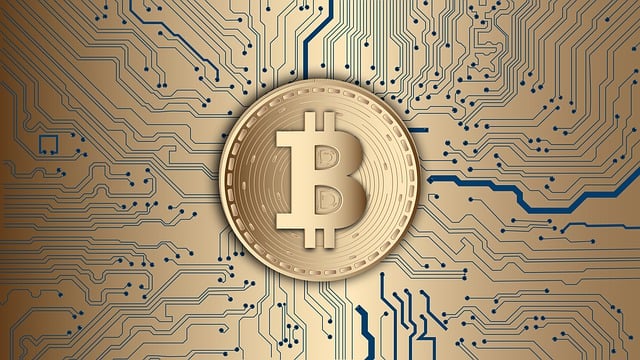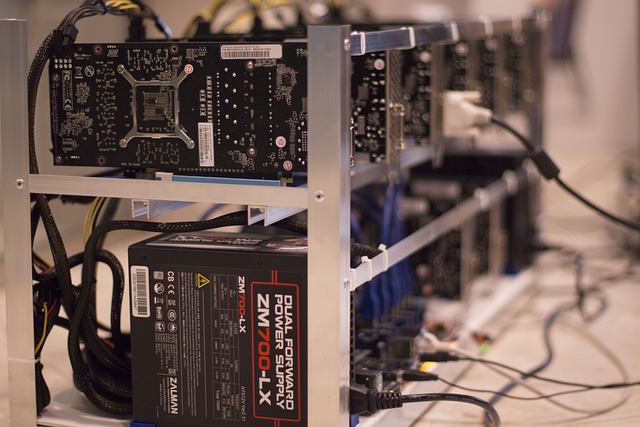Stablecoins, designed to mitigate cryptocurrency volatility, offer investors a safe haven during market uncertainty and facilitate faster, cheaper cross-border transactions. With consistent values achieved often through asset-backed reserves, they enhance liquidity, provide low-risk investment options, and serve as a bridge between traditional finance and decentralized digital assets. Key benefits include low transaction fees, high liquidity, robust security, and global diversification, making them attractive for both seasoned investors and newcomers. As regulatory frameworks evolve and blockchain technology advances, stablecoins are expected to transform into powerful tools for global transactions while offering stability to investors worldwide.
Discover the world of stablecoins – digital currencies designed to minimize volatility, offering a bridge between cryptocurrencies and traditional finance. This beginner’s guide explores what makes these coins ‘stable’, their significant advantages for investors, and in-depth looks at top stablecoins in the market. Learn about the risks involved and future trends shaping this dynamic space. Uncover how stablecoins could revolutionize investing by providing a secure entry point into the crypto realm.
- Understanding Stablecoins: A Beginner's Guide
- What Makes a Stablecoin 'Stable'?
- How Do Stablecoins Benefit Investors?
- Exploring Popular Stablecoins in the Market
- Risks and Considerations for Stablecoin Investors
- The Future of Stablecoins: Trends to Watch
Understanding Stablecoins: A Beginner's Guide

Stablecoins are a type of cryptocurrency designed to minimize volatility, offering a more stable value compared to other cryptocurrencies like Bitcoin or Ethereum. This makes them particularly attractive for investors seeking less risky options within the crypto market. One of the key benefits is their ability to provide a bridge between traditional financial systems and decentralized digital assets, allowing for easier entry and exit from the cryptocurrency market.
For investors, stablecoins offer several advantages. They serve as a safe haven during periods of market uncertainty, preserving capital more effectively than volatile assets. Moreover, they facilitate faster and cheaper cross-border transactions without the need for intermediaries like banks. This feature is valuable for international businesses and individuals looking to send or receive funds globally. Additionally, stablecoins enhance liquidity in crypto markets, making it easier for investors to buy and sell digital assets at competitive prices.
What Makes a Stablecoin 'Stable'?

A stablecoin’s stability is its key attribute, ensuring it maintains a consistent value, often pegged to a traditional currency like the US Dollar or even another cryptocurrency. This stability offers significant benefits for investors, providing a reliable and low-risk option within the crypto market. The mechanism behind this stability usually involves backing each stablecoin with reserves of assets that maintain its parity, preventing volatile price swings.
This unique feature sets stablecoins apart from other cryptocurrencies, making them attractive to investors seeking digital assets as a store of value rather than solely for speculative trading. With their stable value, stablecoins facilitate easier entry and exit from the cryptocurrency market while offering potential for growth, thus enhancing their appeal for both seasoned investors and newcomers looking for the benefits of crypto without the usual risks associated with volatility.
How Do Stablecoins Benefit Investors?

Stablecoins offer a unique set of advantages that cater directly to investor needs, making them an attractive asset class in today’s financial landscape. One of the primary benefits is their ability to provide a hedge against market volatility. Unlike traditional cryptocurrencies, which can be subject to significant price swings, stablecoins are designed to maintain a stable value, often pegged to a fiat currency or commodities like gold. This stability ensures investors can make more predictable returns and reduces the risk associated with holding digital assets.
Furthermore, these coins facilitate easier access to global financial markets. With their low transaction fees and fast processing times, stablecoins enable investors to diversify their portfolios internationally without incurring high costs. They also bridge the gap between traditional finance and decentralized platforms, allowing for seamless interactions between the two worlds. This dual functionality enhances investment opportunities and contributes to a more inclusive and efficient global economic system.
Exploring Popular Stablecoins in the Market

In today’s digital era, stablecoins have emerged as a game-changer in the financial landscape, offering numerous benefits for investors worldwide. These cryptocurrencies are designed to minimize volatility by pegging their value to a stable asset, typically fiat currencies like US dollars or euro. This feature makes them an attractive option for those seeking a more predictable and secure investment compared to volatile cryptocurrencies like Bitcoin.
Popular stablecoins on the market include Tether (USDT), USD Coin (USDC), and Binance USD (BUSD). Each offers unique advantages, such as low transaction fees, high liquidity, and robust security measures. Investors can benefit from holding these stablecoins as a means of preserving wealth, facilitating cross-border transactions, or using them as a bridge between cryptocurrencies and traditional finance. Their popularity continues to grow, reflecting the increasing demand for digital assets that provide stability and peace of mind in the ever-evolving cryptocurrency space.
Risks and Considerations for Stablecoin Investors

Stablecoins have gained significant attention as a novel asset class, offering investors unique benefits such as price stability and potential for high returns. However, navigating this relatively new space isn’t without risks. One key consideration is regulatory uncertainty; as stablecoins gain traction, governments worldwide are still formulating policies to govern their operation, which can lead to sudden changes in the legal framework. This volatility poses a risk to investors, particularly those looking for long-term holds.
Another crucial aspect to bear in mind is the underlying collateralization method. Some stablecoins are fully backed by fiat currencies or government securities, ensuring 1:1 pegs with their reference assets. While these offer more stability, they also limit the potential for growth. On the other hand, over-collateralized stablecoins, which use crypto assets as backing, provide opportunities for higher returns but carry the risk of price swings in these volatile digital currencies. Investors must carefully assess these risks before committing their capital.
The Future of Stablecoins: Trends to Watch

The future of stablecoins holds immense potential, particularly as digital currencies gain wider acceptance. One key trend to watch is the evolution of these assets to offer enhanced security and transparency, further boosting their appeal for investors looking to diversify their portfolios. Stablecoins are poised to become more than just tools for mitigating volatility; they may eventually serve as a bridge between traditional finance and the burgeoning world of cryptocurrency, making investment easier and more accessible.
Additionally, as blockchain technology advances, we can expect stablecoins to incorporate innovative features like improved privacy protections and cross-border payment capabilities. These developments could streamline global transactions, offering investors not only stability but also speed and efficiency in managing their digital assets. The growing interest in decentralized finance (DeFi) further fuels this trend, pushing the boundaries of what stablecoins can achieve and expanding their benefits for investors worldwide.
Stablecoins are transforming the financial landscape, offering investors unique benefits such as price stability, low volatility, and cross-border transaction ease. As these digital assets gain traction, understanding their underlying mechanisms and associated risks is crucial. By exploring popular stablecoins in the market and staying abreast of emerging trends, investors can navigate this evolving space effectively. The future of stablecoins looks promising, with innovations poised to enhance their efficiency and accessibility, potentially redefining global financial transactions.
